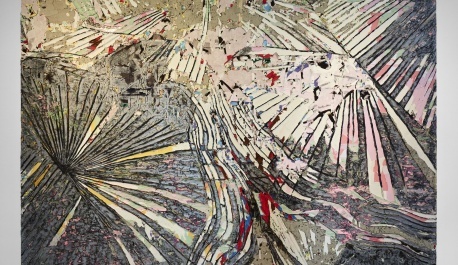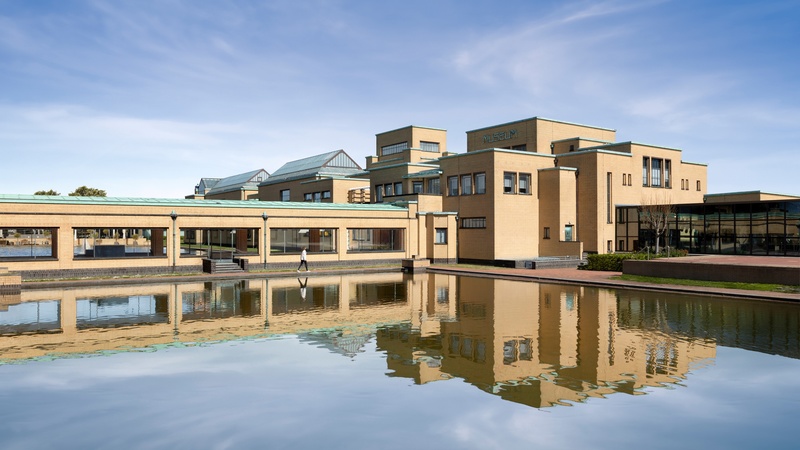Mark Bradford
When Mark Bradford (b. 1961, Los Angeles) needs materials for his work, he doesn’t look for an art supplies shop; he just noses around his own neighbourhood. Remnants of commercial street posters are often his starting point. He creates his ‘paintings’ primarily through a process of adding and subtracting, tearing, overlapping and sanding back, on occasion using paint to emphasise the lines. Specifically for the GEM, he is now creating an installation of paintings and sculptures inspired by illustrated navigational maps of the sixteenth and seventeenth century. One of the exhibits will be a spectacular new painting no less than 23 metres in length.
Bradford lives and works in South Central, one of the poorest neighbourhoods in Los Angeles. Bradford is not the kind of artist who closes his eyes to the outside world and escapes into a private universe; he engages whole-heartedly with society. It was here in South Central, therefore, that Bradford set up “Art + Practice” in 2013: an organisation that unites contemporary art and social work to help young people emerging from the foster care system. And the wider social context to which he attaches so much importance is clearly reflected in his art.
Bradford himself refers to his work as multi-layered. It is literally so, since his technique involves pasting layers of street posters on top of each other and then sanding parts of them back; but also in a figurative sense, because the finished works evoke multiple overlapping associations. Although they bear a strong relationship to ancient maritime maps and he gives them titles like ‘No Time to Expand the Sea’ or ‘A Siren beside a Ship’, Bradford constructs his paintings from materials that are sourced from his own locality and have strong socio-economic connotations. To his mind, this is all interconnected, because it was the old maritime trade routes that enabled colonisation to take place. Ever since then, his community has been subject to exploitation and “sexy cash” scams – a term he discovered on advertisements fly-posted in his neighbourhood by a firm of loan sharks targeting residents struggling to keep their heads above water.
Bradford: “That’s how I make work. Along the way, I take notes, I read about history and popular culture. (…) I pull inspiration from everything”.
Although his technique means that his ‘paintings’ (his preferred description) develop organically, they have a strongly geometric quality, based on intuition. For this reason, he is frequently compared to Mondrian. Bradford’s show at the GEM will include sculptures as well as paintings. His ‘Sea Pigs’ are large buoys treated, like his paintings, with paint, glue and an electric sander until they are reduced practically to concentrations of pure energy. The exhibition is based on a show held at Brandeis University’s Rose Art Museum in the US. For the show at the GEM, however, Bradford is adding a spectacular, brand-new work: [titel] is 23 metres long and composed of the plethora of ‘merchant posters’ that Bradford has collected right from the start of his career.


